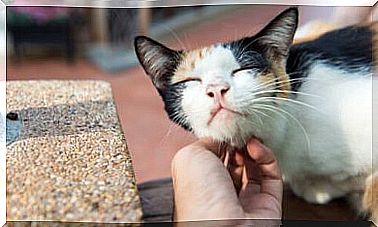Curiosities About Flying Foxes
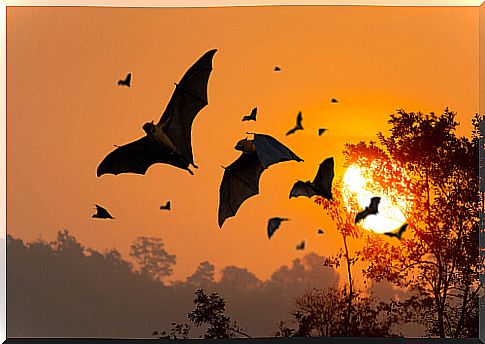
Flying foxes are nicknamed because of their great facial resemblance to foxes. However, they are a type of bat. And it should be noted that this group is, in turn, made up of various species of bats.
Next we will tell you more about these curious animals that attract attention both for their appearance and their large size.
Who are the flying foxes?
As we have been commenting, flying foxes are all bats belonging to the Pteropodidae family. This group is made up of more than 65 species of bats from tropical islands and they are part of the legends of the area. Specifically, they are located on different tropical islands. From Madagascar to Australia, passing through Indonesia and mainland Asia.
These flying mammals have a great similarity to foxes. Especially when it comes to her facial features. However, they are two very different animals. For example, while foxes are opportunistic and carnivorous animals, these bats are frugivores, they eat fruit.
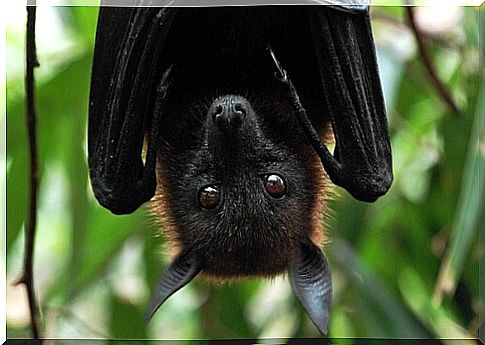
In addition, they are the largest bats, called mega-chiropterans. They can reach a wingspan of 1.5 meters and a length of about 40 cm.
Its great role in nature
Although they are commonly known as “fruit bats”, the diet of flying foxes does not only include fruit. In fact, their diet is also made up of nectar and pollen.
Thanks to these eating habits, these flying mammals can contribute to the survival of many species of plants and animals.
It must be remembered that bats –in general– play an important role, as they help maintain the forest ecosystem. To do this, they act as pollinators and seed dispersers. Similarly, mega-chiropterans contribute to biodiversity. However, these animals are facing habitat destruction and their work is being hampered.
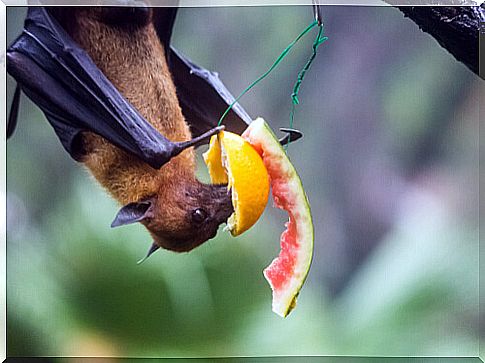
Flying foxes are in a vulnerable state
Of the 65 existing flying fox species, four of them are in serious danger. These species are the black flying fox, the gray-headed flying fox, the spectacled flying fox, or the little red flying fox.
Unfortunately, two of the four species populations have decreased by at least 95% in the last century. The loss of the gray-headed flying fox and the spectacled flying fox has mostly occurred in the last 30 years.
Some studies and researchers have estimated that both species will disappear or will have disappeared in the year 2050. The causes of the extinction of these species and the decline of others would be various.
Causes of its decline
Among these causes would be the loss of habitat and disturbances in their resting or foraging area. The latter causes deaths by starvation as well as the hunting of these species, both legal and illegal, or the impediment of food collection.
Another reason why they can be shot is to prevent them from approaching fruit plantations. This can happen very rarely, as bats prefer to avoid human populations.
Australia is one of the countries that declared bats a protected species in the last two decades. However, the law allows them to be shot if they are observed near the plantations.
Bats are rarely killed instantly by gunshots. The most common is that they are injured and flee. This causes them to suffer a slow and painful death that could be prevented.
One of the ways to avoid this is to use nets that protect fruit trees as well as flying foxes. However, the nets have to be in a certain way to avoid causing harm to the bats.
Behavior and reproduction
Flying foxes have a very small birth rate compared to other animals of the same size. This is because they only have one baby per year.
The hatchling period varies by species. The little reds have their young in April or May and the other three Australian species have them in October or November.
The bond that is established between the mother and the young is very strong, and characteristic behaviors have been noted when they lose their young. Whether from predators or other causes, mothers continue to search and call for their dead calf for a week.
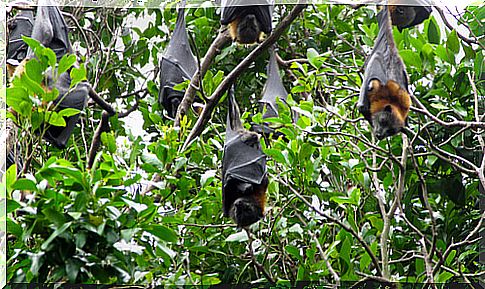
Bats live in mixed colonies in which there are different species. Colonies are a survival strategy and allow them to establish relationships with each other.
However, the individuals of the different species recognize each other by the emission of a characteristic odor. Which is also important in the breeding season, and is perceived in the environment at that time.
Flying foxes due to their large size have generated respect and fear for ages. However, they are very curious and harmless animals for humans.






